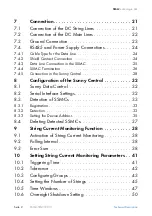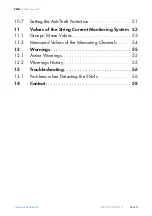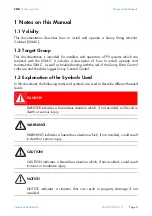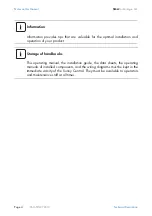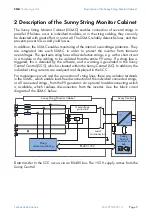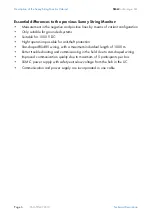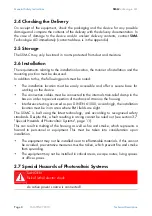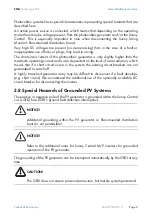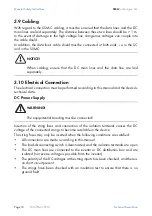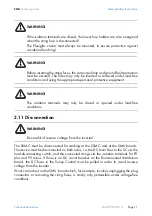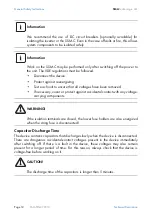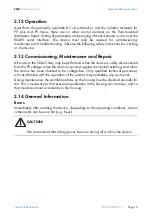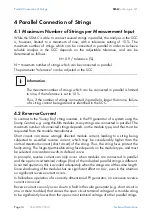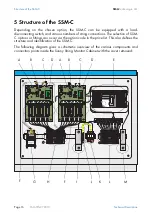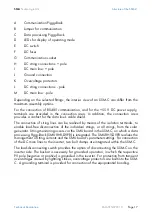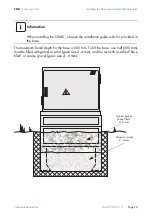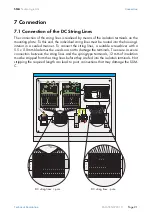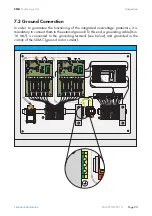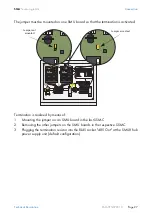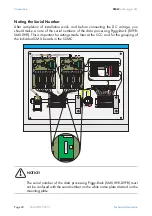
SMA
Technologie AG
Parallel Connection of Strings
Technical Description
SSM-TEN072310
Page 15
In the worst case, the voltage on the faulty string may lie within the MPP voltage (UMPP)
of the remaining generator elements. The internal diode structure of the solar cells then
causes reverse current to flow through the faulty generator string that, depending on the
amount of current, may lead to excessive heating or destruction of the modules in this
string!
Among other symptoms, the following faults may lead to reduction of the open circuit
terminal voltage of a generator string and subsequent reverse current in parallel-
connected systems:
•
Short circuit in one or more modules
•
Short circuit in one or more cells in a module
•
Double ground fault in a module and/or the cabling
Despite the fact that these faults are very unlikely, and extremely rare in practice,
preventative measures must still be taken. After all, these types of faults carry a high
potential for damage and danger, since all modules in the affected string may be
damaged and the local heating may also cause secondary damage. Thus, it is no
surprise that these issues have long been taken into consideration by the UL
(Underwriters Laboratories Inc.) certifiers in the USA and the reverse current ratings are
a standard specification in US data sheets for PV modules.
On the basis of these potential problems, the SSM-C contains fuses that isolate the
defective strings from the rest of the PV array. When a string fuse is triggered due to a
fault in a module, the software detects this and a warning is generated.
-
+
L
N
Current in the faulty string –
total current of the remaining strings

